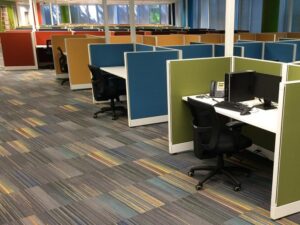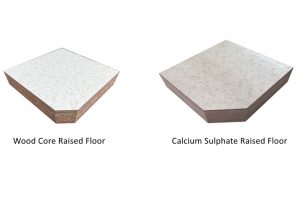The raised access floor is an indispensable item in any data center project. These environments require the ability to handle a large number of data cables, electrical power cables, and cooling systems.
Data centers without raised floors perceive as incomplete as they can make maintenance difficult and inflexible adaptations resulting from technological advances or expansion.
Why install a raised access floor
Some projects need to channel a large number of facilities and systems to act. Others need spaces of different heights according to their different uses.
To achieve these objectives without having to make the building cut more complex, it is possible to incorporate Raised Access Floors. It is forming from a system of modular panels mounted on pedestals or adjustable jacks.
In addition to easily absorbing the unevenness of the floor, improving the insulation and acoustic qualities between levels, and facilitating the revision of the installations. The raised access floors provide greater flexibility in the floor plan by freeing the sky, which no longer depends.
In addition, they come with perforations that allow the evacuation of any liquid that falls on or inside the pedestal floor. Thus, avoiding the appearance of bad odors due to its accumulation and allowing water runoff in outdoor spaces. In the case of metal pedestals, the panel can directly attach to the pedestal with a screw located in each corner of the bracket, without the need for joists between pedestals.
There is a variety of plates according to their coating and pedestal systems. Among them, we can find them made of steel and concrete. Bare steel or steel + special coatings, such as marble, parquet, ceramic, granite, glass, among others. All of them provide the necessary flexibility to adopt duct outlets, grilles, or other systems, allowing them to uninstall and open for maintenance or changes.

Advantages
Both the people involved in the operation and the engineering companies value the flexibility offered by raised floor systems. Regarding power requirements, the number of circuits per square meter is much higher than in the past. In most cases, it is easier to install and manage the cabling at the bottom than at the ceiling.
Also, it can use to blow air conditioning directly into IT equipment, improving the PUE (Power Usage Effectiveness) of the installation.
In general, the raised access floor is a predictable and practical option for most installations and has several benefits:
– Ability to accommodate a range of cabling and cooling solutions.
– Ease of adapting to technological changes during the data center life cycle.
– Provides a platform for future scalability.
– It provides conditions for the space above the raised access floor to remain free for adequate air migration inside and outside the equipment present in the data center.
– Reduces operating costs and lower installation and maintenance costs through affordable, flexible, and adaptable services.
– Leveling the slab. Most of the building’s slabs are irregular. Raised Access Floors use adjustable pedestals that result in a level surface without the need to level the slab. This makes it easier to align rows of racks.





